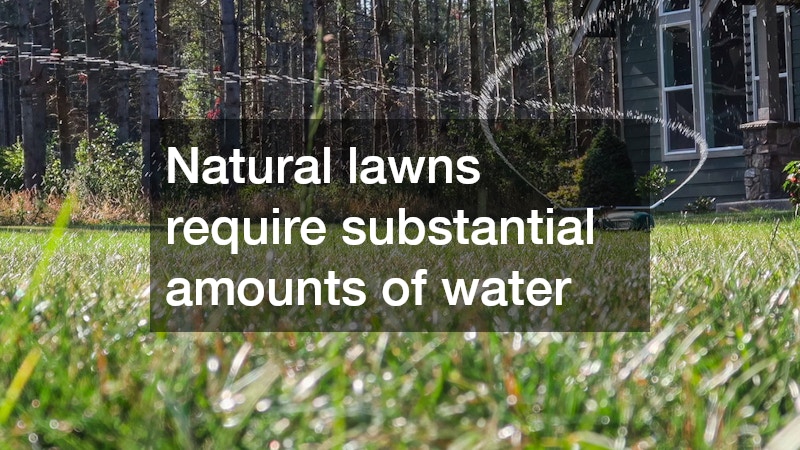The decision between synthetic grass installation and a natural lawn is one many homeowners grapple with. Each option presents its own set of benefits and challenges, shaping one’s outdoor experience. Understanding the differences can lead to a more informed choice that aligns with personal lifestyle and values.
Curb Appeal and Aesthetics: Which Lawn Looks Better Over Time?
Visual appeal plays a significant role in the choice between synthetic and natural lawns. Natural lawns bring vibrant colors and a sense of authenticity, which many people find aesthetically pleasing. Over time, however, natural grass can suffer from wear and tear, leading to patchiness and discoloration that may detract from its overall appearance.
Synthetic grass, on the other hand, maintains a consistent and lush look throughout the year. Synthetic grass installation can be designed to appear as realistically as possible, mimicking the appearance of various grass species. Homeowners often appreciate the ability to have a vibrant lawn without concern for seasonal changes or wear due to foot traffic.
Ultimately, the decision on aesthetics can depend on personal preferences. Some people value the natural look and feel of real grass, while others appreciate the uniformity and low maintenance of synthetic options. Factors such as location, neighborhood trends, and individual taste play a crucial role in shaping this decision.
Upkeep and Maintenance: How Much Work Are You Really Signing Up For?
The maintenance required for each type of lawn is a significant consideration for homeowners. Natural lawns often require regular mowing, watering, and fertilization to thrive. Seasonal changes may necessitate more intensive care, such as aeration, overseeding, and pest control, which can be labor-intensive and time-consuming.
In contrast, synthetic grass demands significantly less upkeep. Typically, basic maintenance involves occasional brushing and rinsing to keep the surface clean and free of debris. Many people find that this reduced maintenance time allows for more leisure activities rather than chores, making synthetic grass an appealing option for busy households.
Moreover, the ease of maintenance can greatly influence the overall enjoyment of outdoor spaces. Those who love gardening or landscaping may prefer the challenges and rewards of maintaining a natural lawn. On the flip side, homeowners looking for convenience may quickly lean towards synthetic grass installation solutions, allowing them to enjoy their yards with minimal effort.
Cost Comparison: Initial Investment vs. Long-Term Savings
When comparing costs, one must consider both the initial investment and the long-term expenses associated with each type of lawn. Natural grass may appear more economical at first, requiring only seed, soil amendments, and water to establish. However, over time, regular maintenance costs, including mowing equipment, fertilizers, and irrigation, can accumulate significantly.
Conversely, while synthetic grass installation typically involves a higher initial cost, many argue that the long-term savings make it an excellent investment. Once installed, synthetic lawns eliminate recurring costs associated with maintenance and watering, leading to lower monthly bills and reduced environmental impact. Simple calculations can illuminate how synthetic grass often pays for itself over several years.
Ultimately, the cost comparison goes beyond mere numbers. Homeowners should also weigh their commitment to maintaining natural grass against the ease of synthetic options. An informed choice can hinge on unique personal circumstances, financial considerations, and the value placed upon various lawn characteristics.
Environmental Impact: Water Use, Chemicals, and Sustainability
The environmental ramifications of choosing between synthetic grass and natural lawns can be quite significant. Natural lawns require substantial amounts of water for maintenance, especially in arid regions. This high water consumption can contribute to local drought issues and strains on municipal water supplies, raising concerns among environmentally-conscious homeowners.
Additionally, many natural lawns are treated with pesticides, herbicides, and fertilizers that can have detrimental effects on local ecosystems. The runoff from these chemicals can contaminate water sources and harm wildlife, thereby raising questions about sustainability and health implications for the inhabitants.
Synthetic grass presents different environmental considerations. Synthetic grass installation does not require water, and it eliminates the use of harmful chemicals, leading to a potentially lower environmental footprint. However, the manufacturing and disposal processes of synthetic grass materials can increase overall environmental challenges. Balancing these factors is key for consumers focused on sustainability.
Both synthetic grass installation and natural lawns have their unique advantages and disadvantages. The best choice depends on personal preferences, environmental considerations, and intended usage. Careful analysis of aesthetics, maintenance, costs, and environmental impacts will aid homeowners in making the right decision for their unique situations.




